Contemporary Control Systems, Inc.
provide an extended version of the following article in
 PDF format.
PDF format.

Mitsubishi Heavy Industries PA10-6C
Modification of an ARCNET card to control a PA10 manipulator
The manipulators of the PA10 series by Mitsubishi Heavy Industries can be controlled via an ARCNET connection besides the Motion Control Board which is shipped with the PA10 by default. The open concept of the PA10 series is explained in a Paper of Ken Oonoshi.
To create an ARCNET connection between the manipulator's controller and your computer you'll need an appropriate ARCNET card. Unfortunatly, such a card is not available from Mitsubishi. On this page we will explain how we modified an ARCNET card of Contemporary Controls to work with our PA10.
Contemporary Controls produce ARCNET cards which run under Windows OS as well as Linux OS and some other operating systems. In conjunction with Mr. Peter Jefferson of Contemporary Controls and Mitsubishi Heavy Industries we figured out, which technical modifications to a Contemporary Controls ARCNET card must be done to control the PA10.
On the PA10 controller board two parts are relevant for ARCNET communication (see figure 1). The first element is the ARCNET chip. On newer PA10 manipulators the COM20022 of SMSC with data rates up to 10 Mbit is used. Older PA10 models use the COM20020 with data rates up to 5 Mbit. The second element is the media transceiver. This is the small vertical board in figure 1. Here, newer PA10 manipulators have a transceiver which converts from electrical to optical signals for fiber optic cables. Mitsubishi calls this board Optical Conversion Board. A solution for the older PA10 with RS-485 interface is not presented in the following.
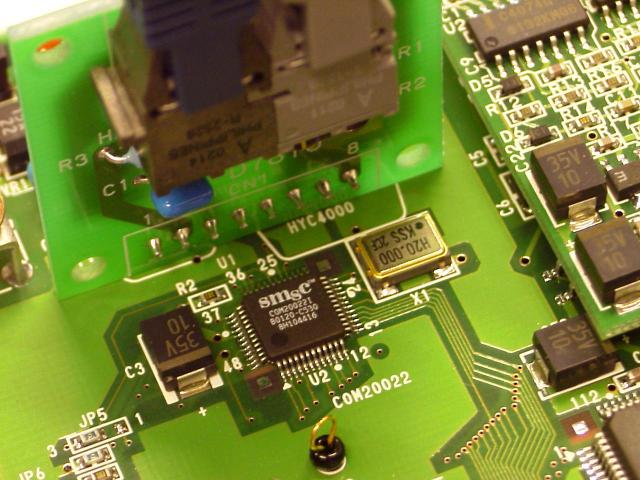
Figure 1: ARCNET interface on the PA10 controller board.
As a counter part to the PA10 controller an additional Optical Conversion Board was delivered by Mitsubishi. It is a small board with a slot bracket (see figure 2). We will now describe how this board can be connected to an ARCNET card by Contemporary Controls. The PA10 manual "Instruction Manual for Servo Driver" describes a similar backfitting for ARCNET cards with a HYC4000 chip set. Such cards have not been available in Germany
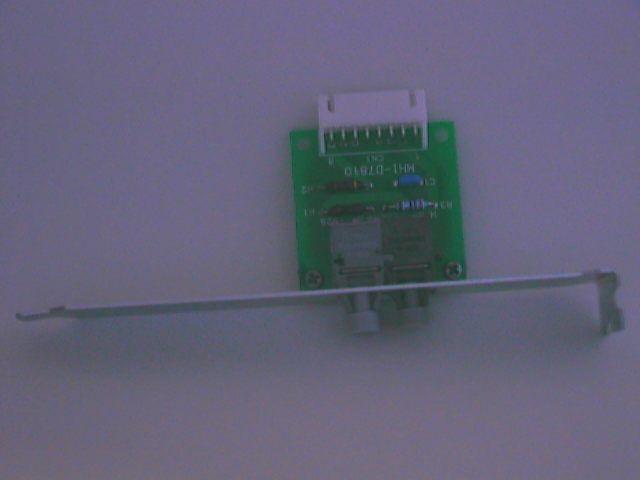
Figure 2: Optical Conversion Board.
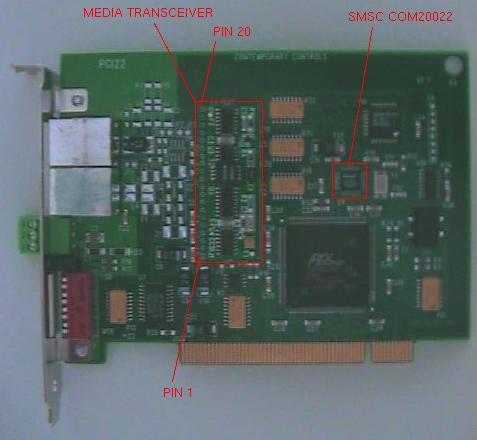
Figure 3: Contemporary Controls PCI22-485X
The cards of the PCI22 series (see figure 3) are used as a base for this description. These cards are equipped with the COM20022 chip. Use cards of the PCI20 serie if you have a PA10 with the COM20020 cip. Mr. Jefferson stated that the necessary steps are the same for all interface cards by Contemporary Controls
27.09.2006: The cards of the PCI22 series are no longer listed on the website of Contemporary Controls. There is a new series called PCI20U which uses the COM20022 chip. For questions about the changes between the PCI22 and the PCI20U and if the modifications can also be applied to the new series contact Contemporary Controls.
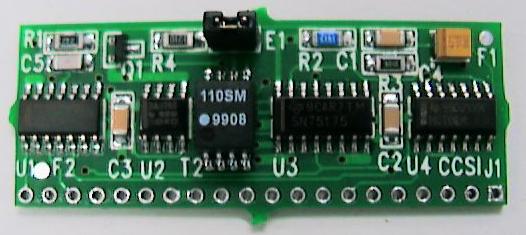
Figure 4: Media transceiver of the PCI22-485X.
As with the PA10 the ARCNET cards also have two relevant parts, the ARCNET chip and the media transceiver (see figure 4). The media transceiver is a small circuit board ontop of the Contemporary Controls ARCNET cards. The cards mainly differ by this media transceiver and the used ARCNET cabeling. The media transceiver is pressed on a 20-pin male connector and can be removed cautiously with a screwdriver or something similars. After that the 20-pin male connector has to be soldered out of the board. Has this been done cleanly, a new edge connector has to be soldered onto the same place on the board (see figure 5).
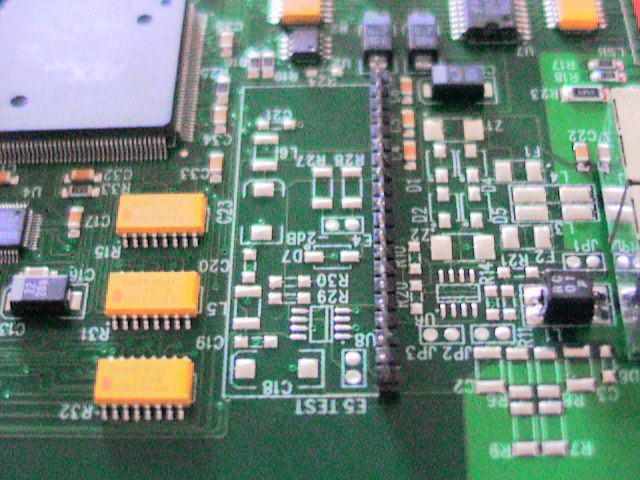
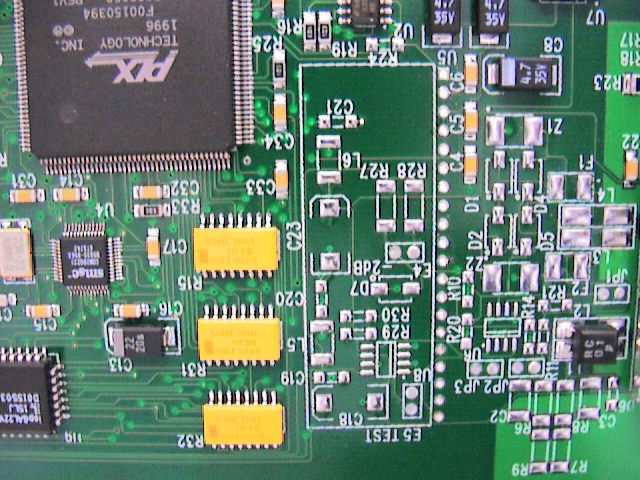
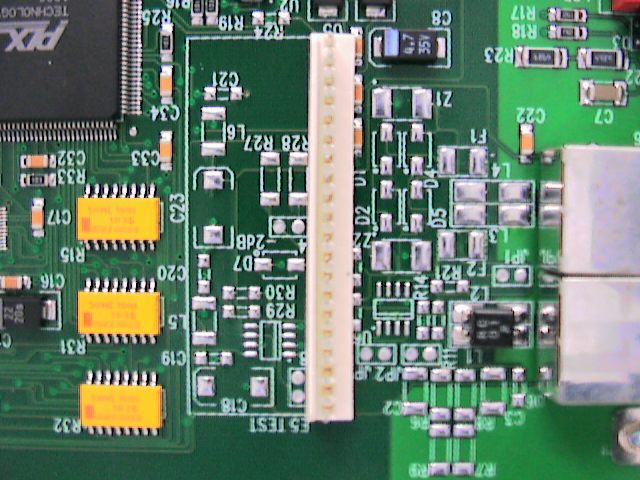
Figure 5: Exchange of the pin connector for the media tranceiver.
A propriate edge connector is e.g. available at Reichelt Elektronik under the name PSS 254/20G. The name of the appropriate coupler housing is PSK 254/20W and the crimp contacts are called PSK-Kontakte.
Pin 1 is marked by a quadratic solder contact. Be carefull about the right connection. On the backside of the edge connector some of the plastic has to be removed from pin 1 to pin 7 because there is not enough room between the contacts and the small resistors on the ARCNET card.
The new connector allows a solid connection between the ARCNET card and the Optical Conversion Board and it is secure against polarity errors due to wrong connenction. If the connector was soldered correctly can be controlled by resistance measurements. Use the manual of the COM20022 chip. Pin 6 of the edge connector should be connected to +5V, pin 7 with RXIN of the COM20022 chip. Pin 4, 13, 14 and 17 should be connected to GND and PIN 20 to PULSE1 of the COM20022 chip.
At the Optical Conversion Board the original connector is replaced by a new 8-pin edge connector. It is also available at Reichelt Elektronik under the name PSS 254/8W. The coupler housing is called PSK 254/8W. Take care that you connect the pins correctly.
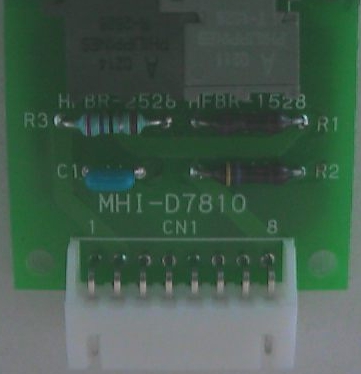
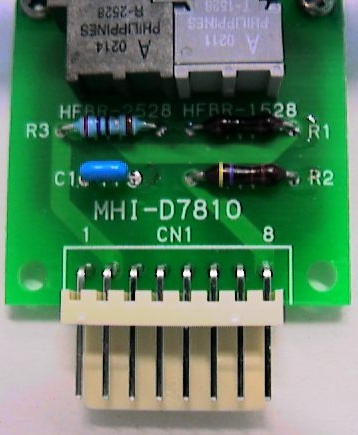
Figure 6: Optical Conversion Board with the old edge connector (left) and the new edge connector (right).
At last, the cabeling with the two coupler housings has to be build. The connection of the pins can be found in the following table.
| Contemporary Controls PCI22 (20 PIN) |
Farbe | Mitsubishi Heavy Industries Optical Conversion Board D-7810 (8 PIN) |
|
|---|---|---|---|
| PIN 6 | +5V | red | PIN 2 |
| PIN 7 | RXIN | blue | PIN 3 |
| PIN 4, 13, 14 oder 17 | GND | brown | PIN 6 |
| PIN 20 | PULSE1 | yellow | PIN 8 |
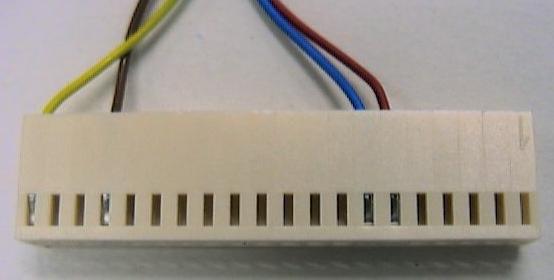
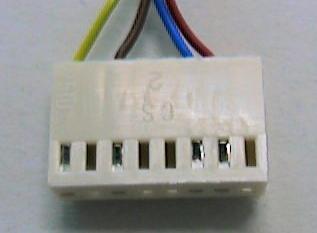
Figure 7: Jacks for the connection between an ARCNET card (left) and the Optical Conversion Board (right).
Additional information about the control of the PA10 via ARCNET can be found in the email of Mr. Jefferson of Contemporary Controls.

